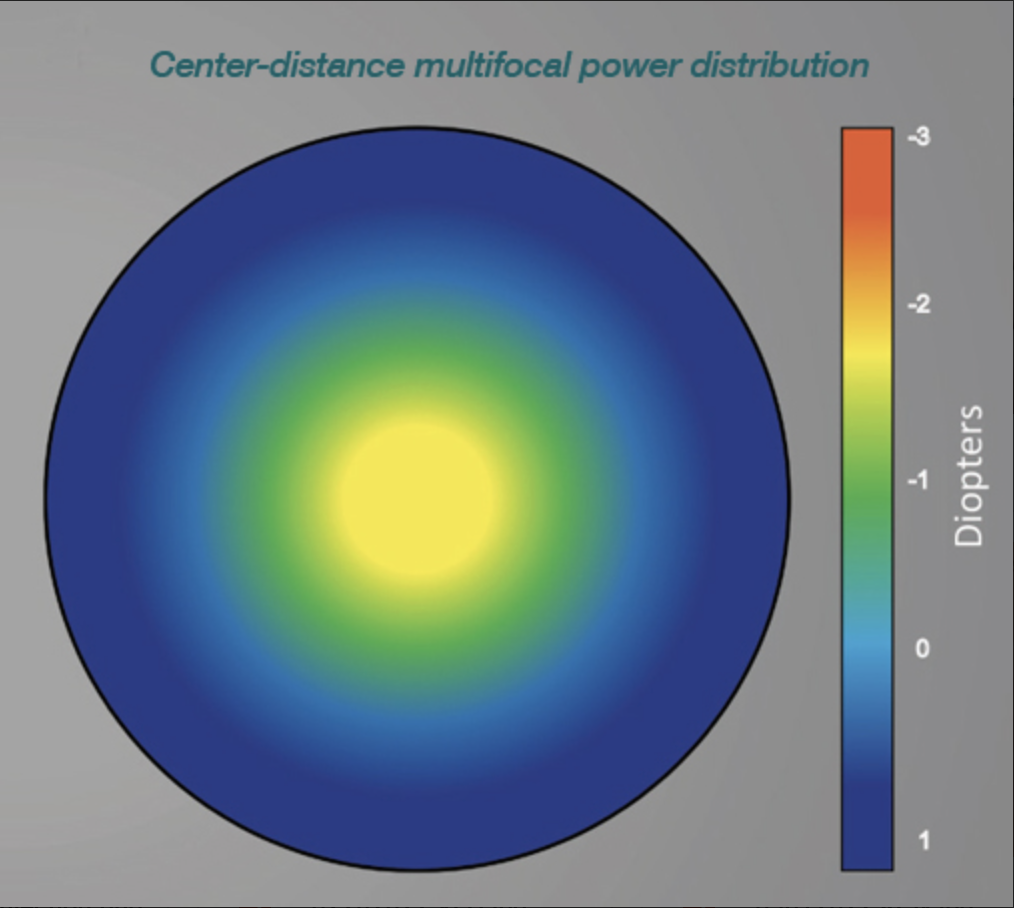 |
| Reduced contrast sensitivity was found in center-distance multifocals. Photo: Keyur Savla. |
There have been several reports on the aspects of visual performance among non-presbyopes while wearing multifocal contact lenses, with measurement of the contrast sensitivity function assessing visual sensitivity considered to provide a better indicator of spatial vision and visual sensitivity. In a recent study, researchers investigated the effect of center-distance multifocal soft contact lenses on contrast sensitivity under photopic and mesopic conditions in non-presbyopic patients.
A total of 25 myopic, non-presbyopic adults were fitted binocularly with three lenses: Biofinity single vision, Biofinity D multifocal +2.50 add and NaturalVue multifocal. Contrast sensitivity was measured at distance (4m) under photopic and mesopic conditions and at near under photopic conditions.
There was no effect of pupil size on contrast sensitivity measured under either photopic or mesopic conditions. “Between the two multifocal contact lenses, there was no difference in the area under the log contrast sensitivity function at distance under both lighting conditions despite reductions when compared with the single vision lens, indicating that differences in the lens design between these two multifocal contact lenses did not translate to significant differences in contrast sensitivity when using the area under the log contrast sensitivity function metric,” the authors explained in their paper on the work. This is contrary to reports of a significant effect of multifocal lens design on contrast sensitivity at distance by some studies.
For the individual spatial frequencies measured, distance contrast sensitivity was always higher with the single vision contact lens than with the multifocal contact lenses except at 18 cycles per degree under mesopic conditions, where there was no difference between the Biofinity and NaturalVue lenses. Although this was observed in a previous investigation of the MiSight lens, the authors noted this was an unexpected finding in this study and suggested a possible explanation of what they call “spurious resolution,” the paper explains.
“Spurious resolution is a phenomenon that allows a target to be seen at a spatial frequency that is higher than that at which the contrast of the target was first no longer perceivable,” the authors explained. “The NaturalVue multifocal has an increase in plus power closer to the center of the lens and greater plus power than the Biofinity D multifocal +2.50 add design. Under mesopic conditions, the increase in pupil size will expose the retina to a larger amount of plus which can lead to spurious resolution through dioptric blur.”
At the spatial frequencies measured, this spurious resolution only occurred at 18 cycles per degree with no difference in mesopic visual acuity (which represents the cut-off special frequency) between the two multifocal contact lenses. This indicates that further studies are needed to measure how multifocal contact lenses affect contrast sensitivity at higher spatial frequencies outside the range measured in this study.
An N, HR G, Ritchey ER, et al. Contrast sensitivity with center-distance multifocal soft contact lenses. Optom Vis Sci. December 13, 2021. [Epub ahead of print]. |


